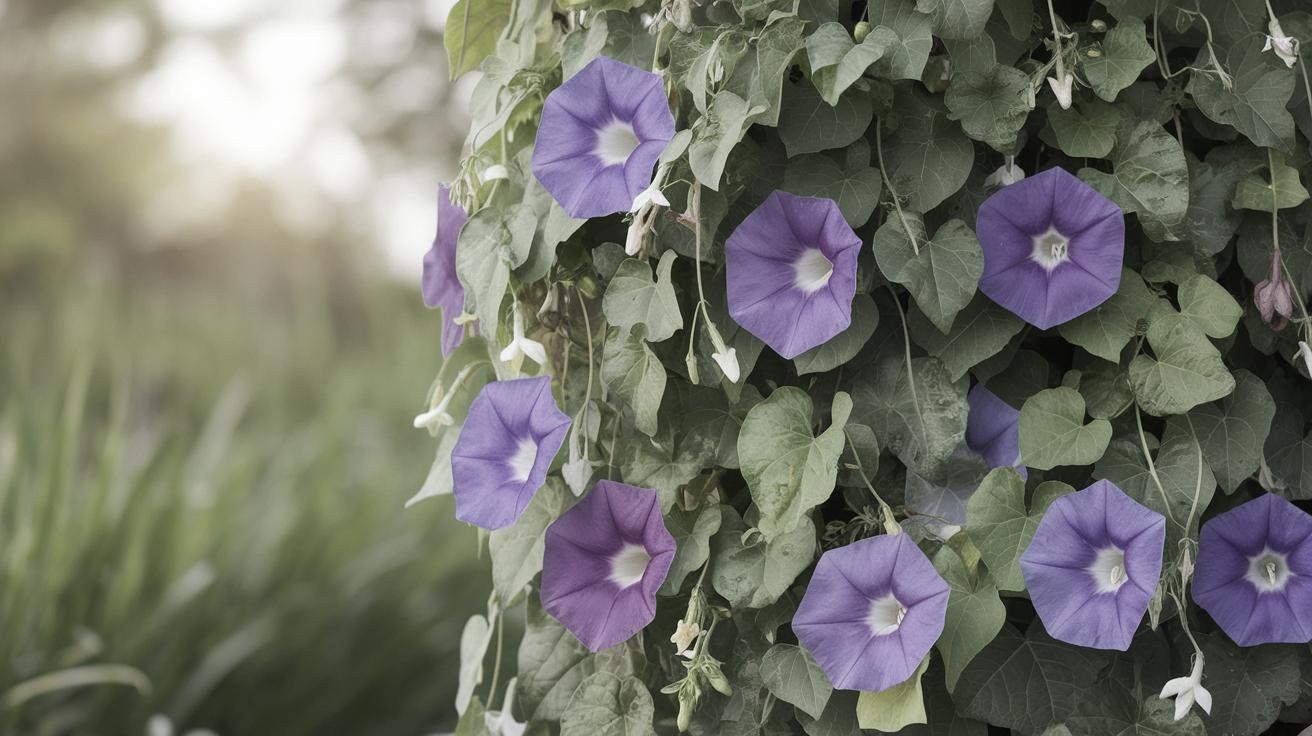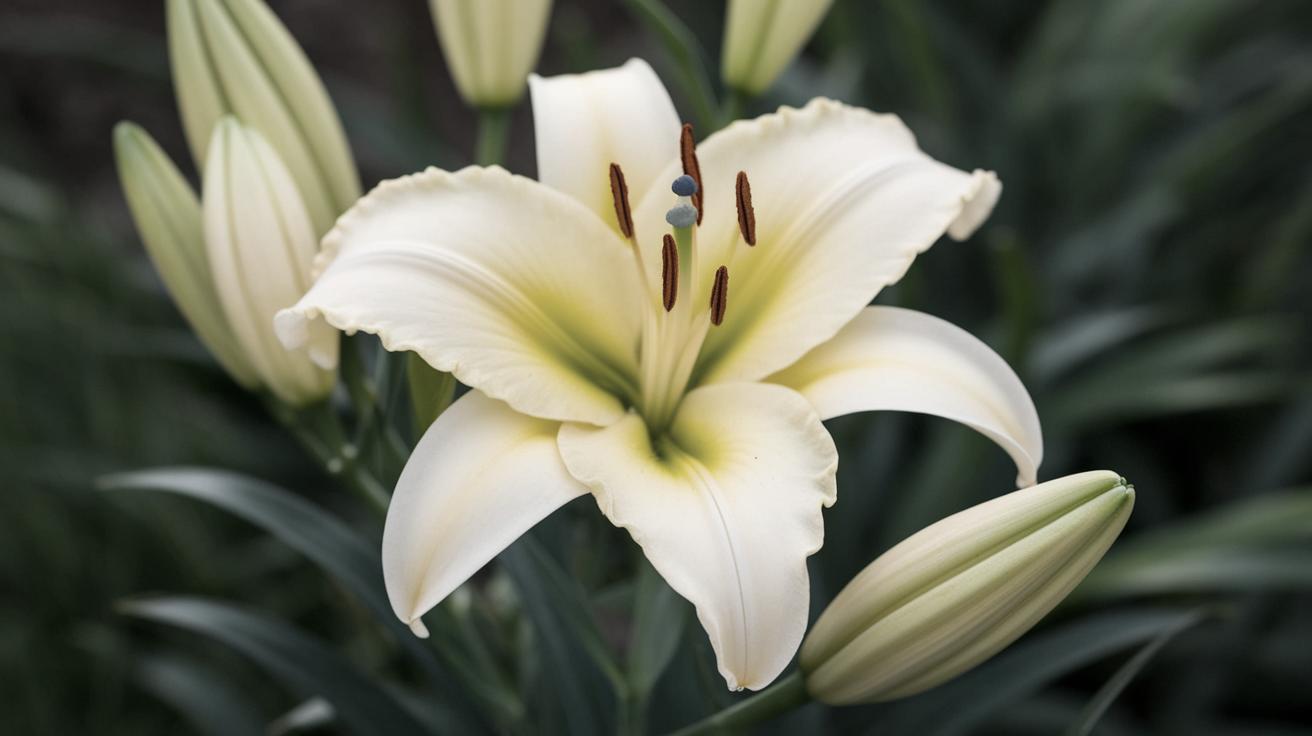How to Grow Morning Glories
Morning glories, with their vibrant colors and lush foliage, are a perfect addition to any garden. These fast-growing climbers are known for their ability to cover trellises, fences, and structures, turning them into beautiful floral displays. This blog post offers an in-depth guide on cultivating morning glories, covering essential aspects such as planting, care, and maintenance. You will learn about their light and soil preferences, watering needs, and temperature requirements. We will also explore different types of morning glories, focusing on annual and perennial varieties, and provide a step-by-step approach to growing them from seeds. Additionally, this guide will help you identify and manage common pests and diseases that may affect your plants. By the end of this article, you’ll be equipped with all the knowledge needed to successfully grow and enjoy these delightful flowers in your garden.
Morning Glory Care
Light
Morning glories thrive in full sunlight and require at least six hours of direct sunlight each day for optimal blooming. Positioning them in a location that receives ample morning light is ideal, as the flowers open in the morning and tend to close by afternoon or evening. Sun exposure is critical not only for a vibrant display but also for the overall health of the plant.
However, if you live in an area with extremely hot summers, a location that provides some afternoon shade can prevent the plants from becoming scorched. Careful attention to light conditions will ensure a healthy growth cycle and a flourished appearance of these enchanting climbers.
Soil
Morning glories are adaptable to various soil conditions but prefer well-drained soil to prevent root rot. They thrive in moderately fertile soil that is not overly rich, as excessive nutrients can lead to lush foliage at the expense of fewer flowers. Preparing the soil with compost can help to enhance drainage and provide the necessary nutrients.
For gardeners who face heavy clay or sandy soils, mixing in organic matter such as peat moss or perlite can improve texture and fertility. A neutral to slightly acidic soil pH of 6.0 to 6.8 is ideal for morning glories, ensuring they absorb nutrients efficiently.
Water
Maintaining the right moisture level is crucial in morning glory care. These plants prefer consistently moist soil, especially during germination and the initial growing phase. Water your morning glories deeply but allow the soil to dry between waterings to prevent overwatering, which can cause root rot.
Once established, morning glories are somewhat drought-tolerant. During dry spells, ensure the soil remains moist to support their prolific blooming. Keep an eye on the weather and adjust your watering routine accordingly to meet the needs of your plants.
Temperature and Humidity
Morning glories are warm-weather plants that thrive in moderate to warm temperatures. They prefer temperatures between 65°F to 85°F (18°C to 29°C) for optimal growth. These plants do not tolerate frost, so planting should be delayed until all danger of frost has passed in your region.
Humidity levels do not greatly affect morning glories, as they adapt well to both dry and humid climates. However, in extremely humid areas, ensure good air circulation to prevent fungal issues that can arise in damp conditions.
Fertilizer
Morning glories require little fertilization. Over-fertilizing can lead to excessive leaf growth rather than flower production. If you choose to fertilize, a balanced, slow-release fertilizer applied once in the growing season is usually sufficient.
Alternatively, incorporating organic compost into the soil at planting time can provide a slow, steady nutrient source. Monitoring the growth and flowering of your morning glories will guide any adjustments needed in fertilization practices.
Types of Morning Glory
Annuals vs. Perennials
Morning glories come in both annual and perennial varieties. Annual morning glories, such as
Ipomoea purpurea
, complete their life cycle in one growing season. They are often favored for their rapid growth and vibrant blooms. These annual types self-seed prolifically, allowing them to return the following year.
Perennial morning glories, such as
Ipomoea indica
, return year after year and are suitable for milder climates where they won’t be affected by frost. They offer sustained beauty and require less maintenance once established. Choosing between annuals and perennials will depend on your climate and gardening preferences.
How to Grow Morning Glory From Seed
Growing morning glories from seeds is a straightforward process that begins with scarifying and soaking seeds to expedite germination. Gently nick the seed coat with a file or soak the seeds in warm water overnight. Plant seeds directly into the garden once the threat of frost has passed.
Plant seeds approximately 1/4 inch deep and space them about 6-12 inches apart. Water regularly, and seedlings should emerge within one to two weeks. Providing a structure for climbing will support their upward growth, resulting in a lush, vine-covered display.
Common Pests & Plant Diseases
Morning glories are generally resistant to many pests; however, they can occasionally be affected by aphids, leaf miners, and spider mites. Regular inspection and maintaining healthy plants can reduce the risk of infestations. Insecticidal soap or horticultural oil can be used for management if pests are identified.
Disease issues such as fungal infections typically occur in overly moist conditions. Ensuring proper spacing and air circulation, along with avoiding overhead watering, can help prevent such problems. Removing affected foliage promptly and practicing crop rotation will also support plant health.
More from The Spruce
For more gardening tips and information about different plant species, visit The Spruce. Their comprehensive resources cover a wide range of topics, from vegetable gardening to landscaping design ideas, supporting both novice and experienced gardeners in creating beautiful, flourishing gardens.
Summary of Main Points
| Aspect | Details |
|---|---|
| Light | Full sunlight; at least six hours daily. |
| Soil | Well-drained, moderately fertile soil. |
| Water | Moist soil, allow to dry between waterings. |
| Temperature and Humidity | 65°F to 85°F (18°C to 29°C); adapts to humidity. |
| Fertilizer | Minimal use; balanced, slow-release if needed. |
| Types | Annuals: complete lifecycle in one season; Perennials: return every year. |
| Growing from Seed | Scarify and soak seeds; plant after frost. |
| Pests & Diseases | Aphids, spider mites; prevent fungal issues with spacing and airflow. |


